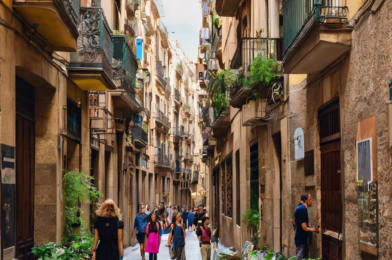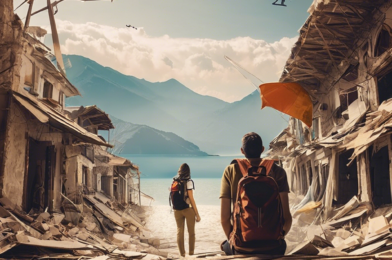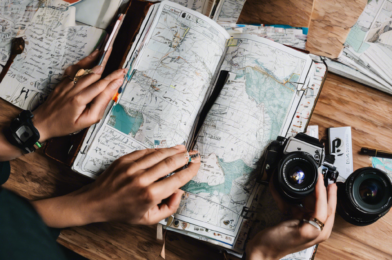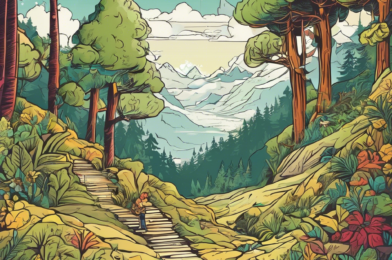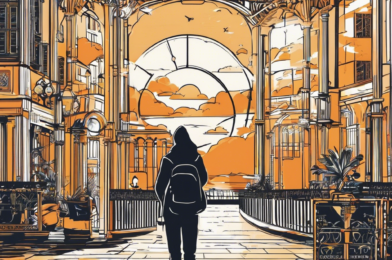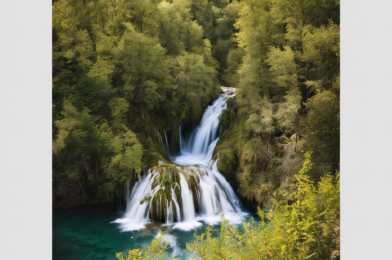Barcelona captures the imagination with its stunning architecture, vibrant culture, and Mediterranean charm. While La Rambla and Sagrada Família draw millions of visitors annually, the city’s true character thrives in neighborhoods where locals live, work, and play. If you’re seeking an authentic Catalan experience away from the tourist crowds, these five distinctive barrios deserve your attention.
Gràcia: The Bohemian Village Within the City
Once an independent town before being absorbed by Barcelona’s expansion, Gràcia maintains its unique village-like atmosphere despite sitting just north of the city center. The moment you step into this neighborhood, you’ll notice the shift in energy—fewer tourists, more locals, and an undeniable sense of community.
Plaça del Sol and Plaça de la Virreina serve as social hubs where residents gather for coffee or vermut (the local aperitif). Narrow pedestrian streets branch out from these squares, revealing independent boutiques, artisanal workshops, and cozy cafés.
What makes Gràcia special is its deeply rooted cultural identity. The neighborhood hosts the famous Festa Major de Gràcia each August, when residents transform streets into elaborate themed art installations using recycled materials. Throughout the year, you’ll find cultural centers like the Lluïsos de Gràcia hosting community events and performances that showcase local talent.
For food enthusiasts, Gràcia offers excellent dining without the premium prices found in more touristy areas. Try Ca’l Pep for traditional Catalan cuisine or La Pubilla for modern interpretations of local classics. The neighborhood also boasts numerous vegetarian options and international cuisine, reflecting its diverse, progressive population.
When exploring Gràcia, allow yourself to wander without an itinerary. The joy lies in discovering hidden plazas, neighborhood bars where everybody knows each other, and the authentic rhythm of Barcelona life.
Poblenou: The Creative District by the Sea
Not long ago, Poblenou was primarily known for its industrial past—a neighborhood of factories and warehouses. Today, it represents Barcelona’s most dramatic urban transformation, evolving into a hub for innovation and creativity while preserving its working-class roots.
The 22@ District, sometimes called the “Barcelona Innovation District,” has attracted tech companies, design studios, and startups to the area. This economic revitalization has breathed new life into Poblenou without erasing its heritage—many former factories now house coworking spaces, galleries, and craft breweries.
Rambla del Poblenou serves as the neighborhood’s main artery, lined with outdoor cafés and restaurants where families gather for Sunday lunch. Unlike the city’s more famous Rambla, this tree-lined promenade maintains a relaxed, local character.
One of Poblenou’s greatest assets is its proximity to the beach. Bogatell Beach offers a more peaceful alternative to Barceloneta, with cleaner sands and fewer vendors. After a morning swim, locals often enjoy brunch at spots like Els Pescadors, which has been serving fresh seafood since 1980.
The neighborhood’s artistic spirit shines in places like Palo Alto Market (held monthly in a former factory complex) and the numerous street art murals adorning building facades. For a unique experience, visit during Poblenou Open Night, when studios and creative spaces welcome visitors to explore their work.
Sant Antoni: The Foodie’s Paradise
Positioned between the more famous neighborhoods of El Raval and Eixample, Sant Antoni has quietly emerged as Barcelona’s most exciting culinary destination. This transformation began with the renovation of the historic Mercat de Sant Antoni, a stunning 19th-century covered market that reopened in 2018 after nearly a decade of restoration.
The market forms the neighborhood’s heart, where residents shop for fresh produce, seafood, and charcuterie. On Sundays, the surrounding streets host a book market where you can browse everything from rare first editions to vintage comics.
Sant Antoni’s food scene extends well beyond the market. The neighborhood pioneered Barcelona’s vermuteria trend—bars specializing in vermouth and small plates. Bars like Vermuteria del Tano serve house-made vermouth alongside classic tapas in unpretentious settings where conversation flows as freely as the drinks.
For coffee enthusiasts, Sant Antoni has become ground zero for Barcelona’s specialty coffee movement. Shops like Three Marks Coffee and Satan’s Coffee Corner have elevated the coffee experience far beyond the traditional café con leche.
The neighborhood also boasts some of the city’s most innovative restaurants. Tickets, by legendary chef Albert Adrià, reinvents traditional tapas with modern techniques, while more accessible spots like El Japonés offer exceptional value and quality.
Beyond food, Sant Antoni charms with its local atmosphere. The grid-pattern streets feature modernist architecture without the crowds of more famous Eixample sections. Plaça d’Osca provides a gathering place where neighbors chat on benches beneath plane trees, creating that quintessential Barcelona street life experience.
El Born: Where History Meets Hipness
Adjacent to the Gothic Quarter but worlds apart in atmosphere, El Born (also called La Ribera) strikes a perfect balance between historical significance and contemporary cool. Medieval buildings house cocktail bars, centuries-old churches stand alongside designer boutiques, and Roman ruins neighbor artisanal gelato shops.
The neighborhood’s centerpiece is the magnificent Santa Maria del Mar basilica, a masterpiece of Catalan Gothic architecture featured in Ildefonso Falcones’ novel “Cathedral of the Sea.” Unlike the more famous cathedral in the Gothic Quarter, this church feels intimately connected to the surrounding neighborhood.
El Born Centre de Cultura i Memòria offers a fascinating window into Barcelona’s past. Built around archaeological remains of the city destroyed after the Siege of Barcelona in 1714, the center documents Catalan history and identity through engaging exhibitions.
For art lovers, the Picasso Museum showcases the artist’s formative years and his deep connection to Barcelona. Nearby, MOCO Museum presents contemporary and street art in a historic palace setting.
The neighborhood’s narrow, winding streets invite exploration, revealing artisanal shops like La Manual Alpargatera, crafting traditional espadrilles since 1941, or Formatgeria La Seu, a tiny cheese shop offering expert-guided tastings of Spanish and Catalan cheeses.
When evening falls, El Born transforms into one of Barcelona’s most vibrant nightlife districts. Skip the tourist traps and head to places like El Paradiso, a speakeasy hidden behind a pastrami sandwich shop, or Bar del Pla for exceptional tapas and natural wines.
Sants: The Authentic Local Experience
Often overlooked by visitors, Sants offers perhaps the most authentic glimpse into everyday Barcelona life. This formerly industrial neighborhood has remained largely untouched by tourism, preserving its strong community spirit and working-class identity.
Carrer de Sants serves as the main commercial street, lined with family-owned businesses rather than international chains. The renovated Mercat de Sants provides a less crowded alternative to more famous markets, with vendors who still have time to chat with customers about how to prepare their products.
The neighborhood centers around Plaça de Sants, where older residents play pétanque while children kick soccer balls. Nearby, Parc de l’Espanya Industrial offers green space featuring unusual metal sculptures and a dragon slide that delights local children.
Sants’ culinary scene emphasizes value and authenticity over trendiness. Bodega Nadal, essentially unchanged since 1914, serves vermouth and simple tapas in an atmosphere of convivial nostalgia. For a taste of Barcelona’s multicultural present, explore the restaurants around Plaça d’Osca, offering everything from Korean to Peruvian cuisine.
During late August, Sants comes alive during its Festa Major, when streets transform with decorations and stages for live music. Unlike more tourist-oriented festivals, this celebration remains deeply rooted in neighborhood tradition and community participation.
The recently developed Jardins de la Rambla de Sants, an elevated park built over railway tracks, provides a peaceful escape and offers unique perspectives of the neighborhood. This green corridor connects Sants to neighboring districts, exemplifying Barcelona’s commitment to urban innovation and livability.
Creating Your Own Barcelona Experience
These five neighborhoods represent just a fraction of Barcelona’s diverse fabric. Each offers a window into different aspects of the city’s character—from Gràcia’s village-like charm to Poblenou’s innovative spirit, Sant Antoni’s culinary excellence, El Born’s historical-modern fusion, and Sants’ authentic local life.
When planning your Barcelona visit, consider basing yourself in one of these neighborhoods rather than the more tourist-centered areas. Rental apartments often provide better value than hotels and allow you to experience the city more like a resident than a visitor.
Barcelona’s excellent public transportation system makes it easy to explore multiple neighborhoods, even during a short stay. The metro connects all areas mentioned, while the city’s Bicing bike-sharing program offers a pleasant way to travel between districts.
Remember that each neighborhood follows its own rhythm. Shops often close for siesta between 2-5 pm, dinner rarely starts before 9 pm, and nightlife continues until the early morning hours. Adapting to this local schedule enhances your experience of the city’s authentic character.
Whether you’re seeking architectural wonders, culinary adventures, artistic inspiration, or simply the pleasure of watching local life unfold from a café terrace, Barcelona’s diverse neighborhoods invite you to discover your own version of this magnificent Mediterranean city—one that extends far beyond the familiar postcard images and tourist trails.
